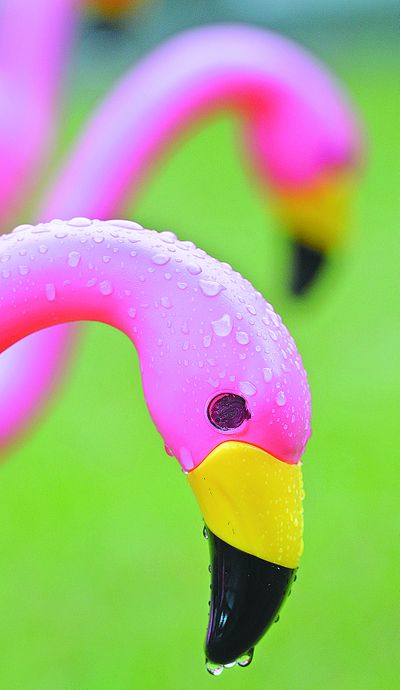Rain, cold stretching spring out
Wet season claims daily records

The weather record book confirms what everyone with a rain jacket or umbrella already knows: late spring in the Inland Northwest has been unusually wet and cool.
Nearly 4 inches of rain has fallen in Spokane since May 17.
High temperatures since May 1 have been the third coolest on record.
The city has seen only one day in the 80s so far this year – May 16, at 81 degrees.
“If it wasn’t for that we’d be breaking our all-time record for the latest 80-degree day ever,” said meteorologist Ron Miller of the National Weather Service in Spokane.
Here’s the irony: The U.S. National Climatic Data Center reports that last month was the warmest May on record globally since 1880.
This occurred even though the entire western U.S. was colder than normal, Miller said. The difference shows the variable nature of weather, he said.
Late spring typically brings some days of wet and cool weather to the Inland Northwest, but this year has had a larger number of extremes.
The high temperature of 52 on Wednesday broke the daily record for the coldest maximum in Spokane. The previous record was 54, in 1949.
Other temperature records were broken or tied in Pullman, Ephrata, Wenatchee, Omak and Grand Coulee.
Thursday’s temperatures were on track for breaking the day’s record-low maximum of 52.
This comes after two records for lows fell in May, including the second-latest frost ever, on May 24.
On average, May is wetter than April, and June brings more than an inch of rain.
Spokane this year had 2.15 inches of rain in May and about 1.7 inches so far in June, which is about 1.5 inches more than normal for the two-month period.
Dry-land farmers in the region count on late spring storms to nourish wheat and other crops at a time when they need moisture the most.
Meteorologists here consider spring to be the longest season in the Inland Northwest in terms of weather, lasting from late February through early July.
The cool spring weather comes after the Inland Northwest had one of its mildest winters ever.
In fact, the highs on Feb. 27 and 28 this year were 53 and 52 degrees respectively, pretty much matching temperatures on Wednesday and Thursday.
A chart from the U.S. National Oceanographic and Atmospheric Administration shows that the western U.S. was possibly the coolest region globally in May.
“Summer in the Inland Northwest really doesn’t start until the Fourth of July,” Miller said.
The current pattern should continue, with a short break between storms today and Saturday before the next low-pressure system moves across the region, increasing showers by Saturday night and Sunday.
Father’s Day should be mostly cloudy, with a 50 percent chance of showers.
Yet another low-pressure system is seen on computer forecast models for the middle of next week.